2026-01-01 05:32:04

Earlier this year, Paul Hudson asked me to answer a few questions about app marketing for a book he was writing called Everything But the Code.
The book is finished now, and it’s full of great advice from Paul and a long list of indie developers whose apps are some of MacStories’ favorites. Paul covers the entire process of making apps, from validating an idea to selling your app and beyond. The only thing he doesn’t cover, as the book’s title makes clear, is building apps, which is the subject of other books and courses he’s created.
Paul was kind enough to ask me to share some insights on marketing apps to the press. You’ll find my contributions in the Prelaunch and Publicity and Aftermath and Evolution chapters, and now that the book is final, I thought I’d share extended versions of my responses with readers. Although the focus is on apps, I expect there are a few lessons here for anyone pitching their creative work to the world. So, here you go.
Paul Hudson: What common mistakes do developers make when pitching their app to the press?
Me: Most developers do a great job thinking through what they’re pitching but don’t spend enough time thinking about who they’re pitching to. I’d love to be able to tell developers do these five things, and you’ll have a pitch you can send to anyone, but it doesn’t work that way. Developers need to think about things like who at a publication typically covers certain types of apps.
For example, if you know a publication has a musician on staff who has covered music apps before, that person should be at the top of your list if you’ve built a guitar tab app. However, that doesn’t mean you shouldn’t contact anyone else at the publication. People get busy, so don’t limit yourself. However, focus your efforts on the people who are most likely to be receptive to your app.
It also pays to make things easy for the person you’re pitching to. Keep your pitch short and to the point, link to a press kit, beta, and other materials, and follow up closer to launch.
A few other pitch pointers:
Paul: What makes you personally excited to write about an app? What kind of thing catches your attention?
Me: Creativity and novelty are what get me excited about an app. Even after so many years of the App Store’s existence, I’m still surprised by what developers create. Sometimes the novelty is expressed through design. Other times, it’s a new approach to an old problem or the application of a new API in a novel way that gets me excited.
I’m also always excited to see someone new pop up on our app radar at MacStories. We have long-time favorite apps, but what keeps what we do interesting and fun is seeing newcomers enter the indie developer ranks and getting to know them through their work.
Paul: Have you ever seen an app where the idea was excellent, but the execution or onboarding let it down? What can developers learn from that?
Me: Apps that have a great core idea but are ultimately a letdown often seem to be rushed onto the App Store either out of excitement about the idea or concern that someone else will build something similar first. There’s a lot to be said for shipping a tightly focused 1.0 of an app to test whether there’s an audience for it. But that sort of classic minimum viable product thinking can also be a trap. It doesn’t mean it’s okay to ship buggy apps or something so basic that it doesn’t distinguish the app from others on the App Store. It’s a tricky balance, but from trying thousands of apps over the years, I can tell almost immediately what level of care and attention has gone into an app.
Paul: What kind of press kit (if any!) makes your job easier and raises the odds of coverage?
Me: I think press kits coupled with a focused email pitch are a great combination. Writers get a lot of app pitches, so it helps to keep the email short and tailored to the recipient. If you’re corresponding with someone who knows you, you don’t need to provide as much context, but if it’s your first contact, it helps to provide a little background about yourself for context.
However, the focus of the email message should always be on your app and what makes it unique. The email should also serve as a pre-launch roadmap with links to TestFlight and your website, and if you’re getting close to launch, information about your release timeline.
Then, create a separate press kit that you can link in the email. That way, whoever you’re pitching has access to more information if they want it. Plus, a separate press kit means not having to attach a bunch of screenshots and other files to the email, which turns your pitch into a file management exercise for the recipient. Instead, include all those assets alongside a detailed breakdown of your app on a simple webpage that can serve as your press kit.
There’s an open-source press kit template that the indie videogame industry has used for years called presskit(), which strikes a nice balance between being comprehensive and readable. It’s the sort of thing that you can set up as a static page linked to your app’s website and host just about anywhere or even build and publish using something like Notion.
Paul: From where you sit, what are indie developers not doing enough of when trying to build an audience?
Me: A lot of indie developers do a good job of building an audience within the indie developer community and among people who follow Apple closely. What deserves more attention is thinking about where the audience for your app is online. The more specialized and focused an app is, the more important this is.
For example, if your app tracks car maintenance, it’s important to find the subreddit and other online spaces where people with that interest gather. Also, if a community doesn’t exist, consider building one yourself. Being part of those communities builds a familiarity and trust that will ultimately help the discovery of your app.
Advertising can also be a good way to build an audience, but it’s often not a financially viable one for someone just starting out as an app developer. Instead, budget a certain number of apps or subscriptions to give away to people who you think might help spread the word about your app. This sort of ‘influencer’ marketing can broaden your reach within communities and has the benefit of not requiring any upfront out-of-pocket costs.
Reading back through my responses has me excited for 2026. I can’t wait to see what developers send our way.
Happy New Year!
2025-12-29 20:17:41
WinterFest 2025: The Festival of Artisanal Software is back with a fantastic new collection of carefully crafted software for writing, research, and thinking.
Innovative software often comes from small teams, crafted with imagination and a vision of a better way to work. There are no bundles, games, or prices that are too good to be true: just fresh software with fantastic support at great, sustainable prices.
Software artisans from around the globe have come together for this time-limited sale to bring you innovative apps to assist you with everyday work. This incredible catalog of productivity software includes:
These amazing deals don’t come around often, so act today to start 2025 off with the best software available from this terrific group of developers.
Visit the WinterFest website to learn more about these amazing deals.
Our thanks to Winterfest for sponsoring MacStories this week.
2025-12-24 00:40:26
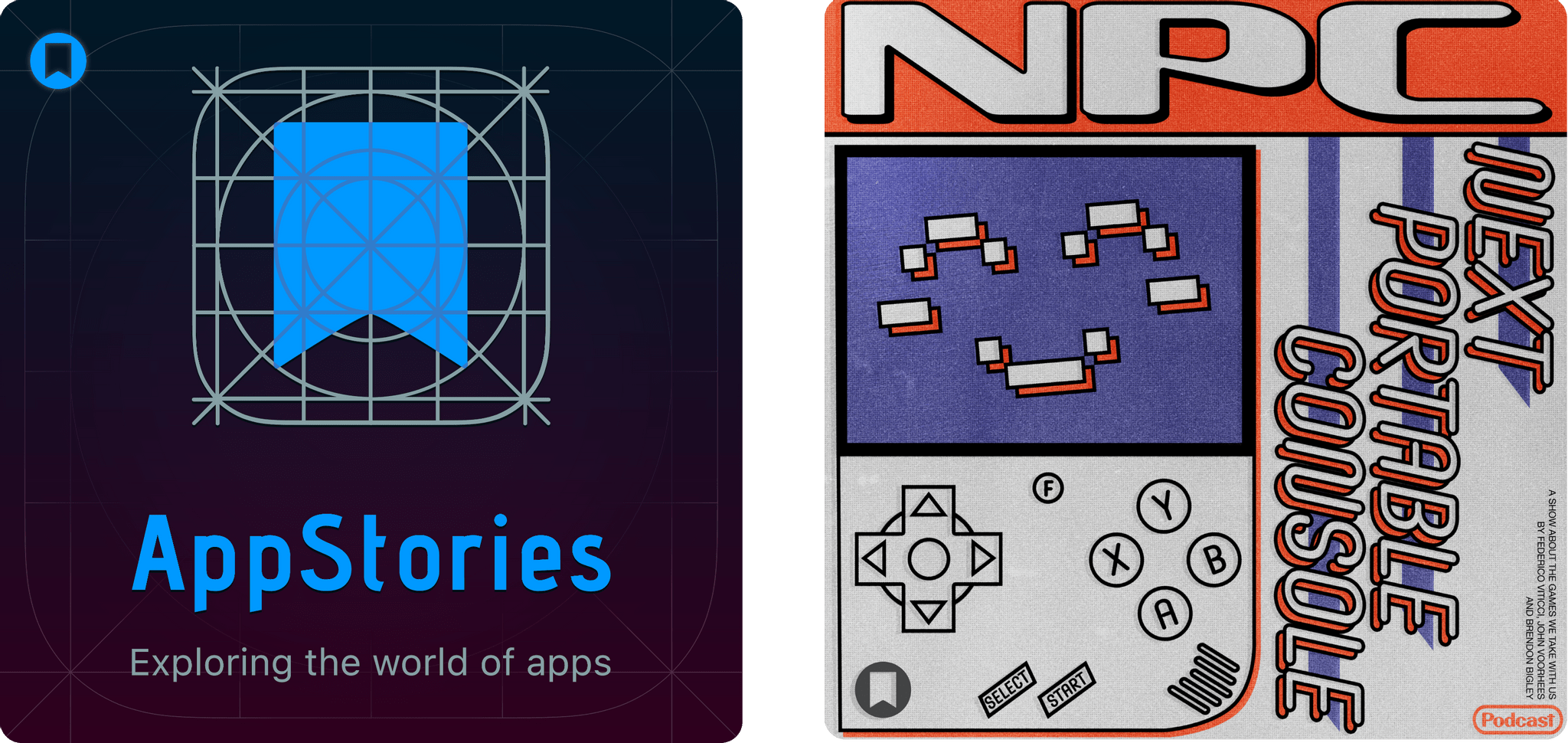
Enjoy the latest episodes from MacStories’ family of podcasts:
This week, Federico and John look ahead to 2026 and what it will mean for apps, smarter Siri, and more.
On AppStories+, Federico and John update listeners on their latest app experiments and holiday hardware projects.
This week, Brendon, Federico, and John pick their top handheld consoles of 2025.
On NPC XL, Federico, John, and Brendon share their HOTY Honorable Mentions and trends they expect for 2026.
Visit AppStories.net to learn more about the extended, high bitrate audio version of AppStories that is delivered early each week and subscribe.
The Contenders:
NPC XL is a weekly members-only version of NPC with extra content, available exclusively through our new Patreon for $5/month. Each week on NPC XL, Federico, Brendon, and John record a special segment or deep dive about a particular topic that is released alongside the “regular” NPC episodes. You can subscribe here.
MacStories launched its first podcast in 2017 with AppStories. Since then, the lineup has expanded to include a family of weekly shows that also includes MacStories Unwind, Magic Rays of Light, Comfort Zone, NPC: Next Portable Console, and First, Last, Everything that collectively, cover a broad range of the modern media world from Apple’s streaming service and videogame hardware to apps for a growing audience that appreciates our thoughtful, in-depth approach to media.
If you’re interested in advertising on our shows, you can learn more here or by contacting our Managing Editor, John Voorhees.
2025-12-20 02:34:41

Enjoy the latest episodes from MacStories’ family of podcasts:
This week, Federico and John reveal the winners of the 2025 MacStories Selects Awards, which celebrate the exceptional design, innovation, and creativity of apps across the iPhone, iPad, Mac, and Apple Watch.
On AppStories+, John has some Apple Music discovery tips for Federico, and they reveal the iPhone features they don’t use.
This week, handhelds are shipping for the holidays, AYANEO makes a bold bet on a phone, a new Strix Halo tablet one-ups the ASUS ROG Flow Z13, and John dips a toe in the Bazzite waters.
On NPC XL, Federico jumps into the Bazzite mini PC world, while Brendon is revisiting the iPod on handheld consoles.
Chris reflects on a big year of changes, Matt has turned his garage into a mini-factory, and the gang buys clothes, but in a techy way.
On Cozy Zone, we draft fonts…for real this time!
This week, Federico and John close out the year by sharing their favorite music of 2025.
This episode is sponsored by:
Visit AppStories.net to learn more about the extended, high bitrate audio version of AppStories that is delivered early each week and subscribe.
NPC XL is a weekly members-only version of NPC with extra content, available exclusively through our new Patreon for $5/month. Each week on NPC XL, Federico, Brendon, and John record a special segment or deep dive about a particular topic that is released alongside the “regular” NPC episodes. You can subscribe here.
For even more from the Comfort Zone crew, you can subscribe to Cozy Zone. Cozy Zone is a weekly bonus episode of Comfort Zone where Matt, Niléane, and Chris invite listeners to join them in the Cozy Zone where they’ll cover extra topics, invent wilder challenges and games, and share all their great (and not so great) takes on tech. You can subscribe to Cozy Zone for $5 per month here or $50 per year here.
We deliver MacStories Unwind+ to Club MacStories subscribers ad-free with high bitrate audio every week. To learn more about the benefits of a Club MacStories subscription, visit our Plans page.
MacStories launched its first podcast in 2017 with AppStories. Since then, the lineup has expanded to include a family of weekly shows that also includes MacStories Unwind, Magic Rays of Light, Comfort Zone, NPC: Next Portable Console, and First, Last, Everything that collectively, cover a broad range of the modern media world from Apple’s streaming service and videogame hardware to apps for a growing audience that appreciates our thoughtful, in-depth approach to media.
If you’re interested in advertising on our shows, you can learn more here or by contacting our Managing Editor, John Voorhees.
2025-12-19 05:07:45
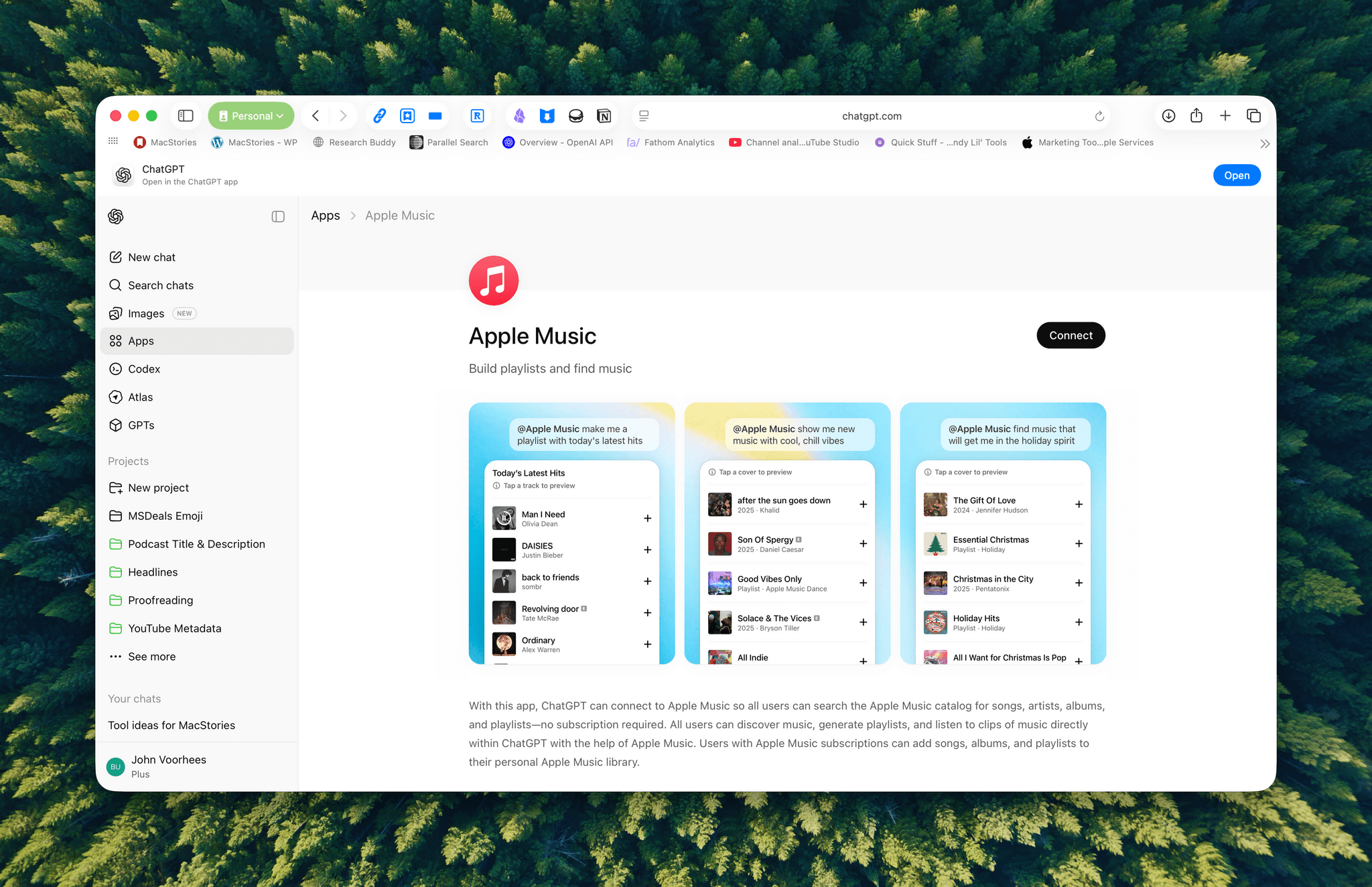
Announced earlier this year at OpenAI’s DevDay, developers may now submit ChatGPT apps for review and publication. OpenAI’s blog post explains that:
Apps extend ChatGPT conversations by bringing in new context and letting users take actions like order groceries, turn an outline into a slide deck, or search for an apartment.
Under the hood, OpenAI is using MCP, Model Context Protocol, which was pioneered by Anthropic late last year and donated to the Agentic AI Foundation last week.
Apps are currently available in the web version of ChatGPT from the sidebar or tools menu and, once connected, can be accessed by @mentioning them. Early participants include Adobe, which preannounced its apps last week, Apple Music, Spotify, Zillow, OpenTable, Figma, Canva, Expedia, Target, AllTrails, Instacart, and others.
I was hoping the Apple Music app would allow me to query my music library directly, but that’s not possible. Instead, it allows ChatGPT to do things like search Apple Music’s full catalog and generate playlists, which is useful but limited.
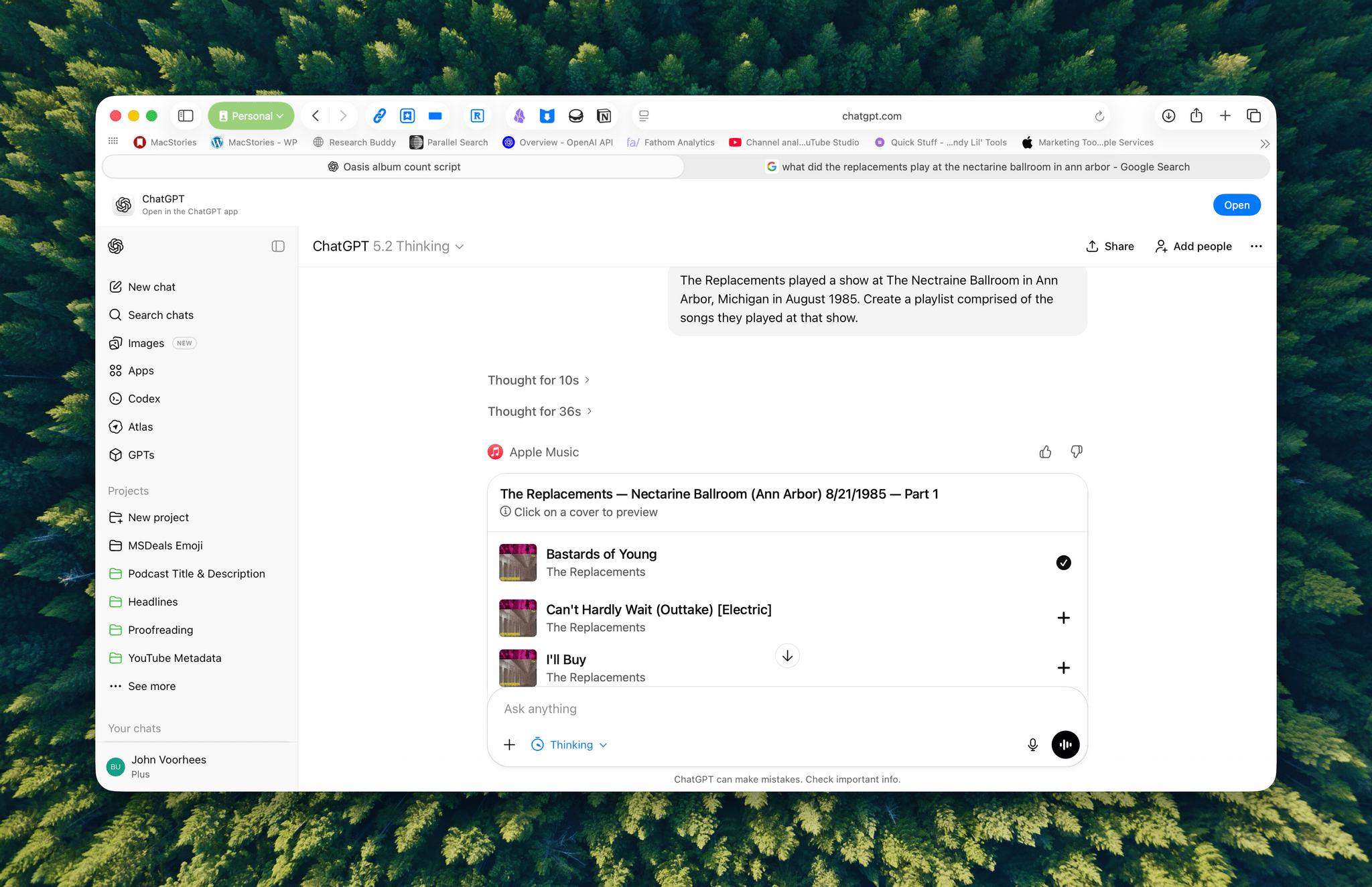
ChatGPT’s Apple Music app lets you create playlists.
Currently, there’s no way for developers to complete transactions inside ChatGPT. Instead, sales can be kicked to another app or the web, although OpenAI says it is exploring ways to offer transactions inside ChatGPT. Developers who want to submit an app must follow OpenAI’s app submission guidelines (sound familiar?) and can learn more from a variety of resources that OpenAI has made available.
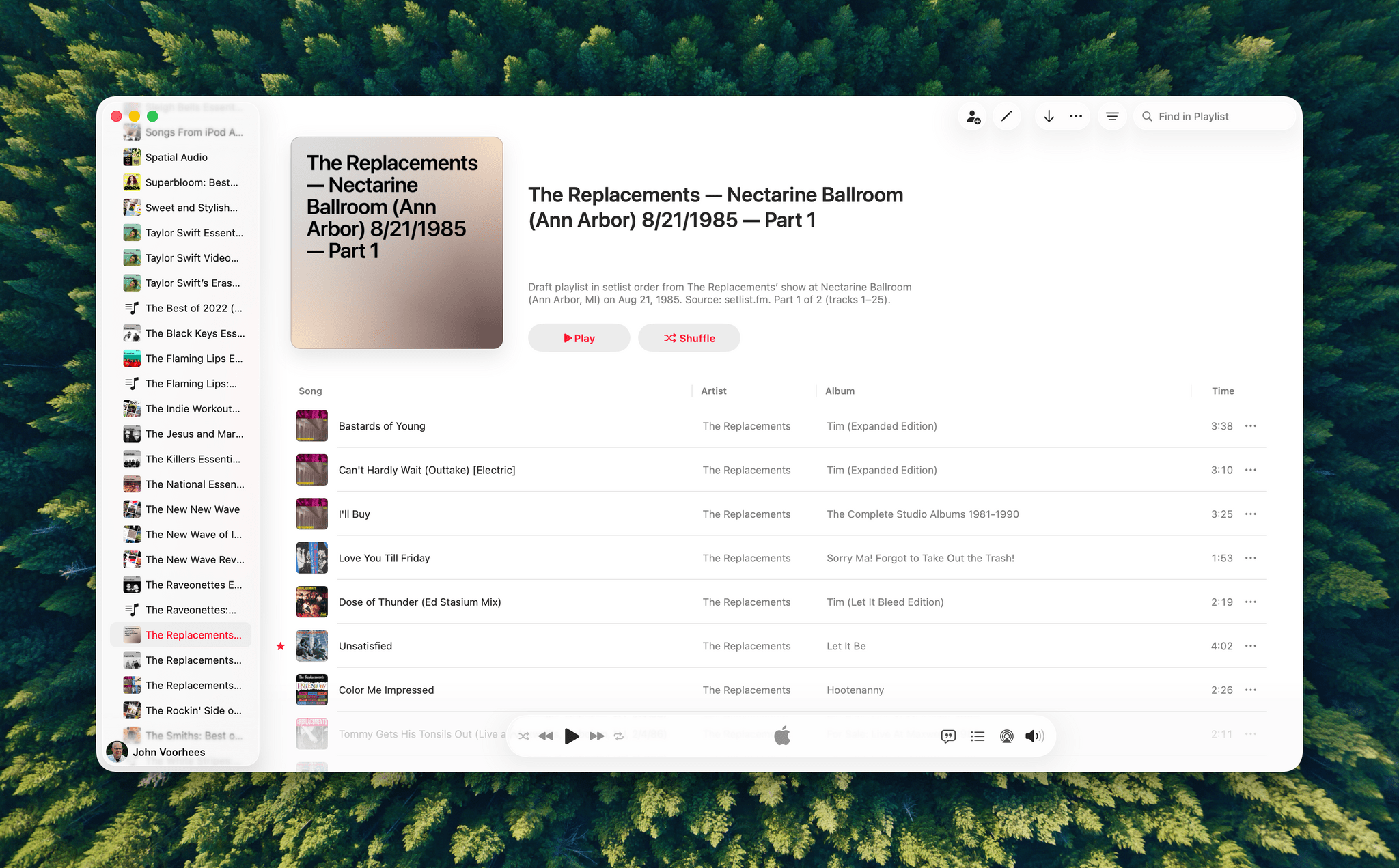
A playlist generated by ChatGPT from a 40-year-old setlist.
I haven’t spent a lot of time with the apps that are available, but despite the lack of access to your library, the Apple Music integration can be useful when combined with ChatGPT’s world knowledge. I asked it to create a playlist of the songs that The Replacements played at a show I saw in 1985, and while I don’t recall the exact setlist, ChatGPT matched what’s on Setlist.fm, a user-maintained wiki of live shows. I could have made this playlist myself, but it was convenient to have ChatGPT do it instead, even if the Apple Music integration is limited to 25-song playlists, which meant that The Replacements’ setlist was split into two playlists.
We’re still in the early days of MCP, and participation by companies will depend on whether they can make incremental sales to users via ChatGPT. Still, there’s clearly potential for apps embedded in chatbots to take off.
2025-12-18 23:50:27
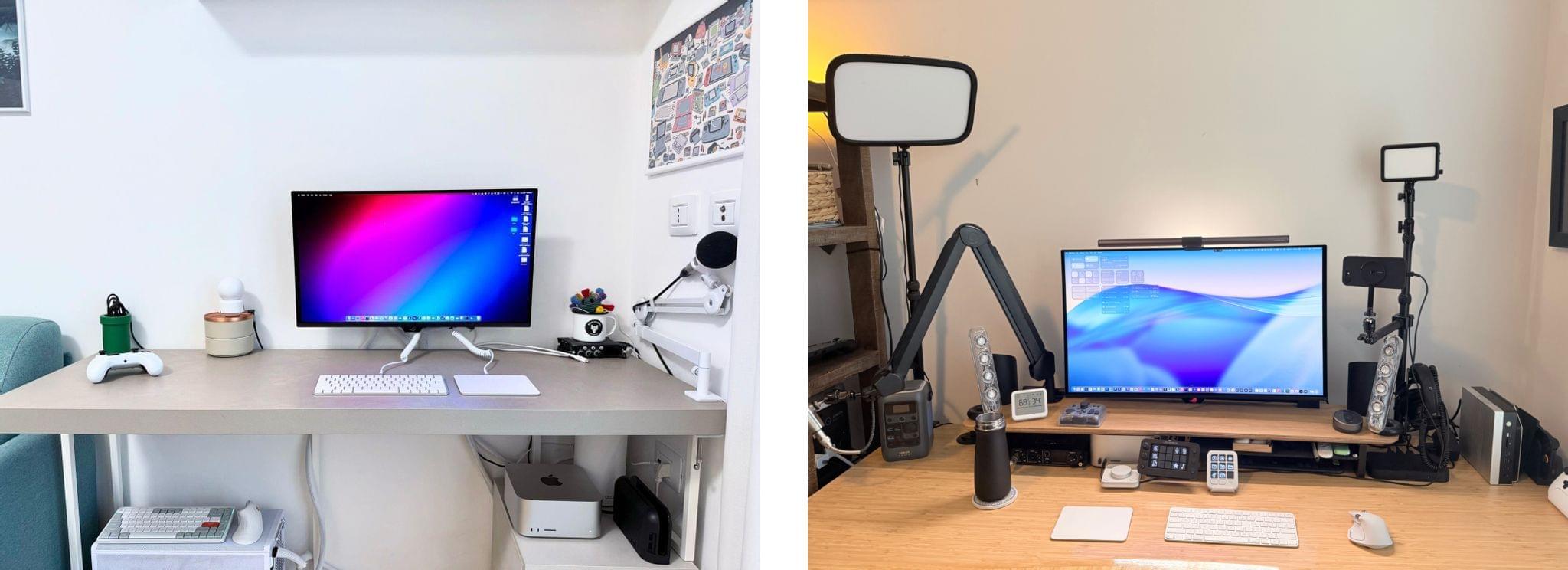
Our desk setups. Federico (left) and John (right).
John: As 2025 comes to an end, Federico and I thought we’d cap off the year with a final update on our setups. We just went through this in November, but both Federico and I decided to take advantage of Black Friday sales to improve our setups in very different ways. Let’s take a look.
My changes were primarily to my office setup. I’ve wanted a gaming PC for a long time, but I never had a good place to set one up. The solution was to go with a high-end mini PC, the GMKtec EVO-X2, which features a Strix Halo processor, 64GB of RAM, and a 2TB SSD. It came with Windows installed, but after a few days, I installed Bazzite, an open-source version of SteamOS, which makes it dead simple to access my Steam videogame library.
Two things kept me from getting a PC earlier. The first was space, which the EVO-X2 takes care of nicely because it’s roughly the size of the Mac mini before its recent redesign.
The second and bigger issue, though, was my Studio Display. It’s an excellent screen, but it’s showing its age with its 60Hz refresh rate and 600 nits of brightness. Plus, with one Thunderbolt port for connecting to your Mac and three USB-C ports, the Studio Display is limiting. Without HDMI or DisplayPort, connecting it to other video sources like a PC or game console is nearly impossible.
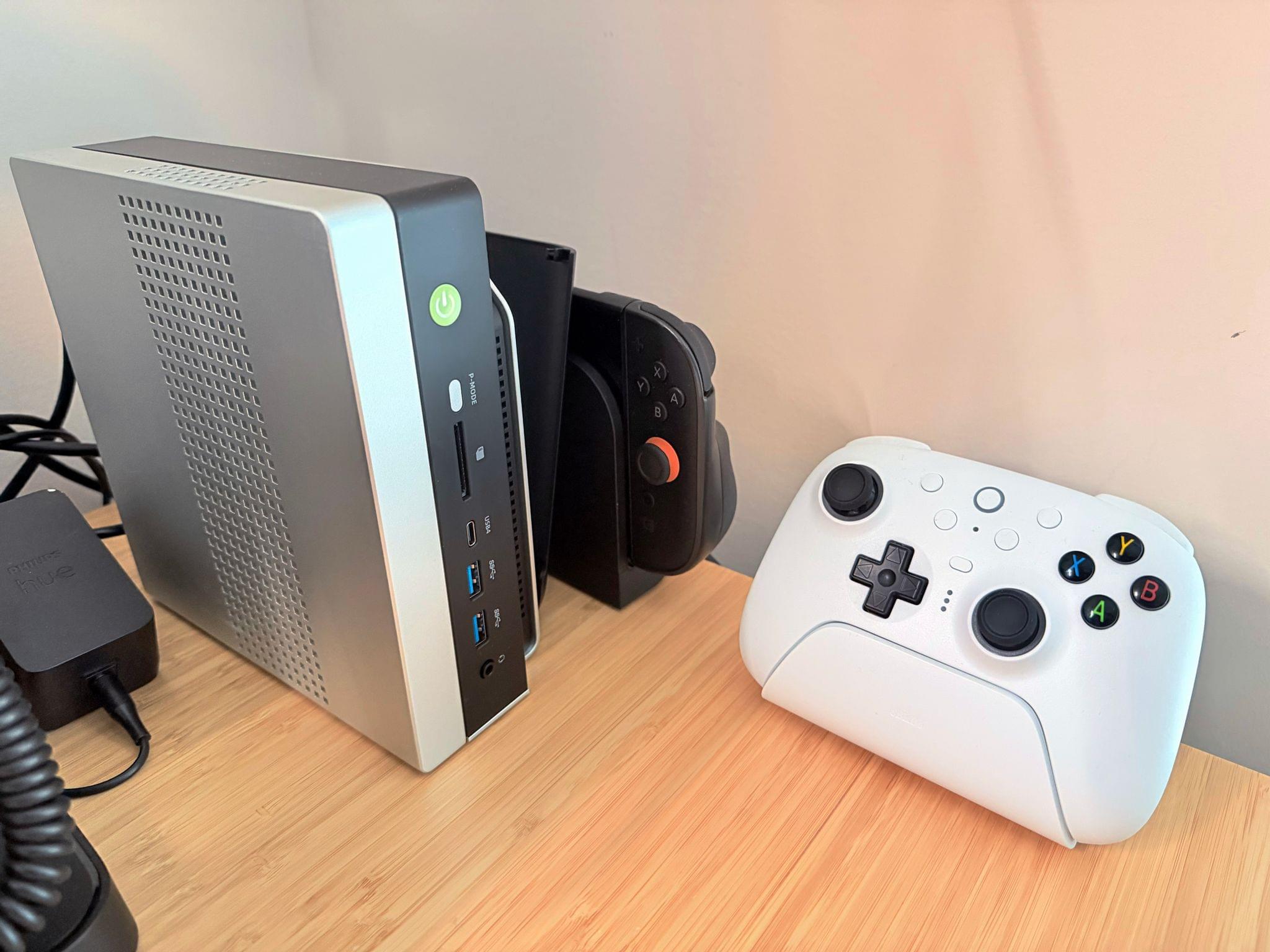
The GMKtec EVO-X2 mini PC, Switch 2, and 8BitDo Ultimate 2 controller
So I also bought a deeply discounted ASUS ROG Swift 32” 4K OLED Gaming Monitor, which is attached to my desk using a VIVO VESA desk mount. I’d wanted a bigger screen for work anyway, and with its 240Hz refresh rate and bright OLED panel, the ASUS has been excellent. However, the ASUS display really shines when connected to my GMKtec and Nintendo Switch 2. As I covered on NPC: Next Portable Console recently, the mini PC combined with a great monitor, which also allows me to stream games to my handhelds over my local network, was the missing link in my setup, delivering a flexibility I just didn’t have before.
Along with the gaming part of my desktop setup, I updated my desktop lighting with two Philips Hue Play Wall Washer lights and a Hue Play HDMI Sync Box 8K, which casts light against the wall behind my desk that’s synced with what’s onscreen. In fact, the Sync Box 8K works with all the Hue lights in my office, allowing me to create a more immersive environment when I’m gaming.
I’ve been using a handful of other accessories lately, too, including:
That’s it from me for 2025, folks. Enjoy the holidays! Things will be a little quieter at MacStories over the next couple of weeks as we unwind and spend the time with family and friends over the holidays, but we’ll be back with lots more before long.
Federico: For this final update to my setup before the end of the year, I focused on two key areas: audio and my living room TV setup.
The biggest – literally – upgrade for me this month has been switching from my previous LG 65” TV to a flagship LG G5 77” model. I’d been keeping an eye on this TV for a while: it’s LG’s first model to use Tandem OLED technology, and it boasts higher brightness in both SDR and HDR with reduced reflections thanks to the new panel. I took advantage of an incredible Black Friday deal in Italy to buy it at 50% off, and we love it. The TV rests almost flush against the wall thanks to its compact design, but since it’s not completely flush, it allowed us to re-install our Philips Hue Gradient Light Strip behind it. Since I was in a renovation mood and I also wanted to future-proof my setup for the Steam Machine in 2026, I also upgraded to a Hue Bridge Pro and replaced my previous Hue Sync Box with the latest 8K edition that is certified for HDMI 2.1 connections. Speaking of gaming: as I discussed this week on NPC, I got a Beelink SER9 Pro mini PC and installed Bazzite on it to get a taste for SteamOS in the living room; this one will eventually be replaced by a more powerful Steam Machine.
The other area of improvement was audio. I recently realized that I wanted to fully take advantage of Apple Music and Spotify’s support for lossless playback with wireless headphones, which is something that, alas, Apple’s AirPods Max do not support. So after much research, I decided to treat myself to a pair of Bowers & Wilkins Px8 S2, which are widely considered some of the best Bluetooth headphones that you can buy right now. But you may be wondering: how do you even connect these headphones to Apple devices that do not support Qualcomm’s aptX Lossless or Adaptive codecs? That’s where the BT-W6 Bluetooth dongle comes in. In researching this field, I came across this relatively new category of small Bluetooth adapters that plug into an iPhone’s USB-C port (they work on a Mac or iPad, too) and essentially override the device’s built-in Bluetooth chip. Once headphones are paired with the dongle rather than the phone, wireless streaming from Apple Music or Spotify will use aptX Lossless instead of Apple’s legacy SBC protocol. The difference in audio quality is outstanding, and it makes me appreciate the Px8 S2 for all they have to offer.
While I was at it, I also took advantage of another deal for a Sonos Move 2 portable speaker; we’ll have to decide whether this one will be permanently docked on my desk or next to a record player that Silvia is getting me for Christmas. (We don’t like surprises for each other, especially when it comes to furniture-adjacent shopping.)
So that’s my update before we go on break for a couple of weeks. I can already feel that, when I’m back, I’ll have some changes to cover on the software front. But we’ll talk about those in 2026.